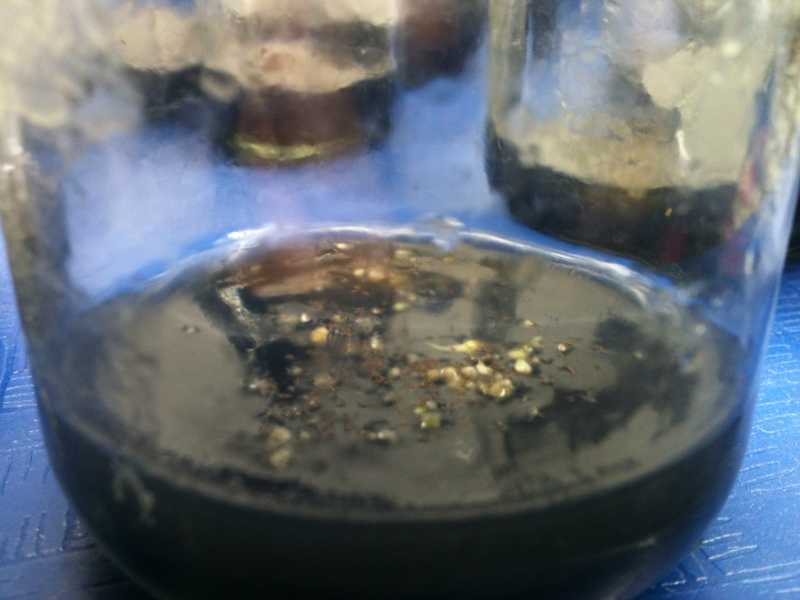
Hi everybody,
I am very happy to share this picture of green dots in a jar! This is my first batch of Paphs ever, P. bellatum and P. spicerianum, and half of them I did with a new method I wanted to try - chlorine fumigation.
Chlorine fumigation sterilization is described here:
http://www.scielo.br/scielo.php?script=sci_arttext&pid=S0102-05362006000200019
Instead of the usual sterilization in a syringe of some bleach solution, you just sprinkle the seeds in prepared jars, cover the jar with a piece of plastic wrap with a thumb sized hole. Put a bleach soaked cotton ball (somewhat wrung out) on the plastic wrap over the hole, and put another piece of plastic wrap and then the lid. Let the chlorine fumes disinfect the jar for 3-4 hours, then use a forceps to quickly remove the cotton ball. You are done.
The idea is the bleach produces enough chlorine fumes to kill the spores, but not enough to kill the seeds. The paper says keep the cotton ball in for 3-4 hours, I kept the cotton ball in 3.5 hours.
The first batch of jars I tried half with the standard syringe method, half with this "Cl fumes" method. Both had success, and a contamination rate of about 1 in 8 (13%). Terrible I know but good enough for me. The syringe method was done in a big clear plastic tub and I am terrible at the syringe method, so uncoordinated, and as I do small batches I'm afraid I waste seed in the syringe. After I had success with the Cl fumes" I did the next batch with only the fumes method.
Let me know if you want any more details. I will say test that your cotton balls don't disintegrate in the bleach. (I used the concentrated bleach (8.25% sodium hyperchlorite) - I was careful to use fresh, unopened bleach). With the second batch I used a newer bag of cotton balls and they fell apart when i went to pull them out with the forceps. I ended up having to take the lid off and remove all the plastic. Surprisingly my contamination rate was the same the previous batches. Both bags of cotton balls said 100% cotton.
I hopes this encourages other to try paph seeds. I did all this in a regular kitchen. The next week I made ginger bread cookies and that seemed a lot harder! For other things like making media I read a lot of the great posts here and followed their instructions (although for Trithor's methods I substituted iced tea for wine
I still have to worry about getting a sterile environment for replating. The university said I could use laminar flow hood, but I do like to do things on my own and I'd like to say, "These are from my crappy glove box!"
Some jars seem to have few enough in them maybe they don't need to be replated. Has anyone taken plants from seed to compot in one jar? I'd probably have to make holes in the lid at some point. Six months? a year? maybe for the ones with plastic wrap still on take off the lid, secure the plastic wrap and poke holes in the wrap and cover with a plastic bandage. Any suggestions are appreciated.




































